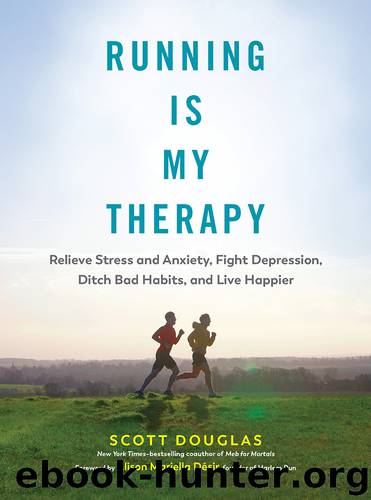Running Is My Therapy by Scott Douglas

Author:Scott Douglas
Language: eng
Format: epub
Publisher: The Experiment
PROFESSIONAL ON-THE-RUN TALK SESSIONS
Saremi has woven these insights on greater conversational openness into her work. In 2014, she started her private practice, Run Walk Talk, now located in Redondo Beach, California. After an initial in-office session, clients can opt to see Saremi while walking or running on an oceanside recreation path, two blocks from Saremi’s office.
The genesis of Saremi’s approach came in 2012, when she was working at a community health agency. “I had a lot of male clients,” she says, “and it was hard for them to talk about emotional things or difficult things when they were sitting in an office with me and looking me in the eye. So, I went on walks with them, and I got so much more information. I think that was a function of being side by side and not having that sustained gaze.”
Saremi assures her clients that the point of their mobile sessions is therapy, not a killer workout. They walk or run only as fast as is comfortable for the client to converse. Occasionally, Saremi is in the opposite situation, with a client whose conversational pace would be difficult for her. In those cases, “We talk about pace before we go out and that the point is to use the movement to check in with the body and understand what’s happening in their lives. If they find the slower pace frustrating, we explore that,” Saremi says. Before heading out, Saremi and her clients also discuss confidentiality issues stemming from being outside and what to do if they bump into a client’s acquaintance.
Then they head out and back on the path, with Saremi setting a timer to mark the turnaround point. “We’re doing the same things we’d do in an office,” she says. “You’re telling me about what’s going on in your life.” Saremi doesn’t take notes during office sessions, so the inability to do so while running isn’t a hindrance.
Saremi’s clients include entrepreneurs and other driven professionals. She says that many of them value the walk or run therapy simply because they feel that combining a workout with therapy is more efficient use of their time. For others, however, being in motion allows for more effective sessions.
“Sometimes it makes the therapy possible,” Saremi says. “They realize this feels good or that just being outside changes their mood. That might seem obvious, but when you’re in the throes of depression or anxiety, it’s really hard to believe that changing your environment or changing what you’re doing with your body can change how you feel.”
Saremi also takes what were originally office visits outside. “There have been sessions with people who are really depressed and get into really negative self-talk. I’ll say, ‘You’re really in a bad place right now. I think we should go outside; walking might help.’ And the thinking pattern changes. Movement and the scenery interrupts that negative flow.” Fredendall likewise conducts mobile sessions when appropriate. “I keep my running shoes in the back room,” she says. “With some patients I’ll say, ‘Let’s go for a walk,’ and we go out the back door and walk for a mile.
Download
This site does not store any files on its server. We only index and link to content provided by other sites. Please contact the content providers to delete copyright contents if any and email us, we'll remove relevant links or contents immediately.
Should I Stay or Should I Go? by Ramani Durvasula(7562)
Why We Sleep: Unlocking the Power of Sleep and Dreams by Matthew Walker(6618)
Fear by Osho(4660)
Flow by Mihaly Csikszentmihalyi(4634)
Rising Strong by Brene Brown(4378)
Why We Sleep by Matthew Walker(4360)
The Hacking of the American Mind by Robert H. Lustig(4318)
How to Change Your Mind by Michael Pollan(4292)
Too Much and Not the Mood by Durga Chew-Bose(4272)
Lost Connections by Johann Hari(4098)
He's Just Not That Into You by Greg Behrendt & Liz Tuccillo(3831)
Evolve Your Brain by Joe Dispenza(3610)
The Courage to Be Disliked by Ichiro Kishimi & Fumitake Koga(3414)
Crazy Is My Superpower by A.J. Mendez Brooks(3329)
In Cold Blood by Truman Capote(3309)
Resisting Happiness by Matthew Kelly(3301)
What If This Were Enough? by Heather Havrilesky(3275)
The Book of Human Emotions by Tiffany Watt Smith(3238)
Descartes' Error by Antonio Damasio(3230)
